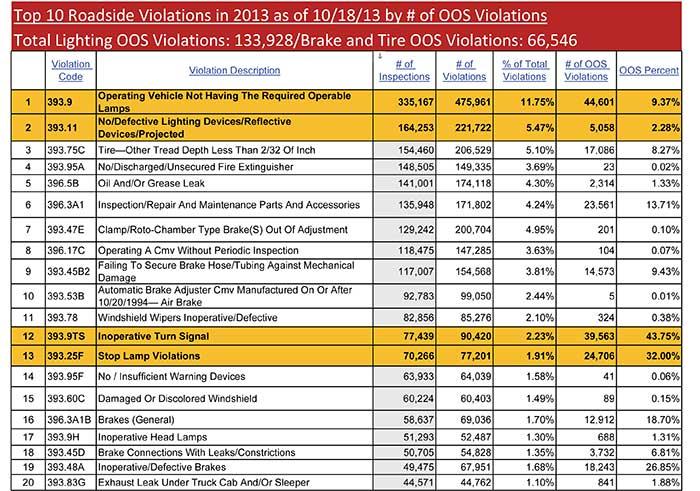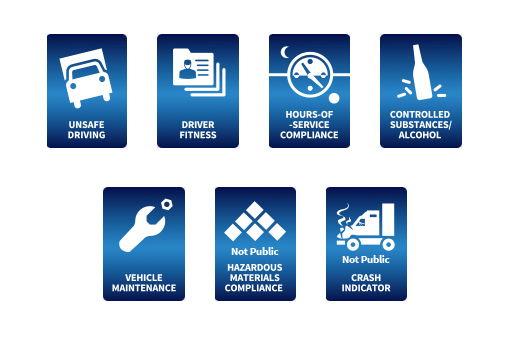In the labyrinthine world of trucking, a hidden metric serves as both a compass and a cautionary tale for operators and insurers alike: the Compliance, Safety, Accountability (CSA) score. This multifaceted score, designed to enhance roadway safety, wields significant influence over a vital aspect of the industry—insurance premiums. As trucking companies navigate the often-treacherous terrain of regulations, understanding how CSA scores affect their coverage costs can mean the difference between operational success and financial strain. By illuminating the interplay between these scores and insurance rates, this article aims to decode the complexities at work, offering truck operators the insights they need to steer their businesses toward safer, more affordable horizons. Join us as we delve into the nuances of CSA scores and their undeniable impact on the bottom line of the trucking industry.
Understanding CSA Scores and Their Role in Trucking Insurance Calculations
The Compliance, Safety, Accountability (CSA) program serves as a critical evaluation tool for trucking companies, directly influencing their insurance premiums. CSA scores are derived from a carrier’s safety performance data, which includes various metrics like crash history, driver fitness, vehicle maintenance, and hazardous materials compliance. Insurers utilize these scores to gauge risk levels,with lower scores indicating better safety performance. Consequently, companies with higher CSA scores typically face higher insurance premiums, reflecting the perceived risk when underwriting policies.This connection between safety metrics and financial implications ensures that safe driving practices benefit both the carriers and their insurance costs.
Insurance providers frequently enough analyze specific aspects of CSA scores to determine risk profiles, which include factors such as:
- Accidents: Frequency and severity of crashes.
- Vehicle Maintenance: History of mechanical issues that may affect safety.
- Driver Behavior: Incidents of unsafe driving practices, including speeding and substance abuse.
To visualize the impact, consider the following table illustrating the relationship between CSA score ranges and their associated premium increases:
| CSA Score Range | Premium Increase Percentage |
|---|---|
| 0 – 10 | 0% – 10% |
| 11 – 24 | 10% – 20% |
| 25 – 39 | 20% – 30% |
| 40+ | 30% and above |

The Relationship Between Safety Performance and Insurance Premiums
In the competitive realm of trucking, safety performance plays a pivotal role not just in compliance but also in the financial viability of a business. Insurance companies meticulously analyze various safety metrics, including CSA scores, to assess risk levels.A fleet with higher safety ratings is often perceived as less risky, leading to reduced premiums. Conversely, a history of accidents, violations, or safety issues can significantly inflate costs. This dynamic encourages trucking companies to prioritize safety training and compliance efforts, fostering a culture where safety is paramount and directly tied to their bottom line.
The correlation between a company’s safety performance and insurance premiums is not just a one-time evaluation. Insurers continuously monitor a fleet’s performance metrics, feeding back into premium adjustments either positively or negatively. As an example, fleets that maintain a consistent record of safety improvements may qualify for lower premiums over time. To visualize this relationship, consider the following table:
| CSA Score Range | Risk Level | Typical Premium adjustment |
|---|---|---|
| 0-10 | Low | –20% |
| 11-25 | Medium | no Change |
| 26+ | High | +30% |
This table illustrates how different CSA score ranges can impact the risk level and typical premium adjustments. By focusing on improving their scores, trucking companies can effectively manage not just their safety record but also their insurance costs.

Strategies for Improving CSA Scores to Lower Insurance Costs
Improving CSA scores is essential for trucking companies seeking to lower their insurance costs. Implementing a proactive safety management system is one effective strategy. Such a system should focus on driver training and education, emphasizing defensive driving techniques and adherence to regulations.Additionally, regular vehicle maintenance checks should be scheduled to ensure that all equipment operates efficiently and safely.Keeping thorough records of maintenance can demonstrate diligence to insurers,potentially leading to lower premiums.
Moreover, investing in technology and tracking systems can significantly enhance safety and compliance. By utilizing telematics and GPS tracking, companies can monitor driving behavior, vehicle location, and mechanical performance in real-time. This data not only helps in identifying risky patterns but also supports making informed decisions to improve overall operations. Regular internal audits and safety meetings can foster a culture of accountability and openness—elements that insurance providers look favorably upon when assessing risk and setting premiums.

Navigating the Insurance market with Favorable CSA Outcomes
Understanding the nuances of the insurance market can be tricky for trucking companies, but a *favorable CSA score* can serve as a significant advantage. Insurers often scrutinize CSA scores, which reflects a company’s safety record and compliance with regulations.A lower CSA score indicates fewer safety violations and incidents,leading to better insurance offers. Key factors that play into the evaluation include:
- Accident Frequency: A history of fewer accidents boosts your reputation.
- Inspection Results: Clean inspection reports can sway the insurer’s perception positively.
- Safety Programs: Implementing robust safety training can improve scores and lower premiums.
Furthermore,a solid CSA score not only translates into competitive insurance rates but could also bolster operational credibility within the transportation sector. As an example, many clients prefer working with carriers that have excellent safety records, making it easier to secure contracts. Companies can also anticipate savings on:
| Cost aspects | Impact of favorable CSA Scores |
|---|---|
| Premium Rates | Lower premiums based on improved safety records. |
| Deductibles | Potential for reduced deductibles over time. |
| operational Costs | Lower costs linked to fewer accidents and claims. |
Final Thoughts
In the complex world of trucking, where miles are measured in more than just distances traveled, the importance of CSA scores cannot be overstated. These ratings serve as a vital compass for insurers, guiding their decisions and, ultimately, influencing the premiums that trucking companies must navigate. As we’ve explored, maintaining a favorable CSA score is not just about compliance; it’s a strategic asset in managing operational costs and sustaining a competitive edge in the freight industry.
As we conclude, it’s clear that proactive measures—ranging from regular maintenance checks to extensive driver training programs—can significantly enhance a trucking company’s CSA score. In an habitat where insurance rates can mean the difference between smooth sailing and rocky roads, taking heed of your CSA standing is not merely advisable—it’s essential.
So, whether you’re a seasoned trucking professional or new to the industry, remember that your CSA score is more than a number; it’s a reflection of your commitment to safety and excellence.By prioritizing its health, you empower your business to not only secure more favorable insurance premiums but also to forge a reputation built on reliability and trust in the logistics landscape. Safe travels ahead!
